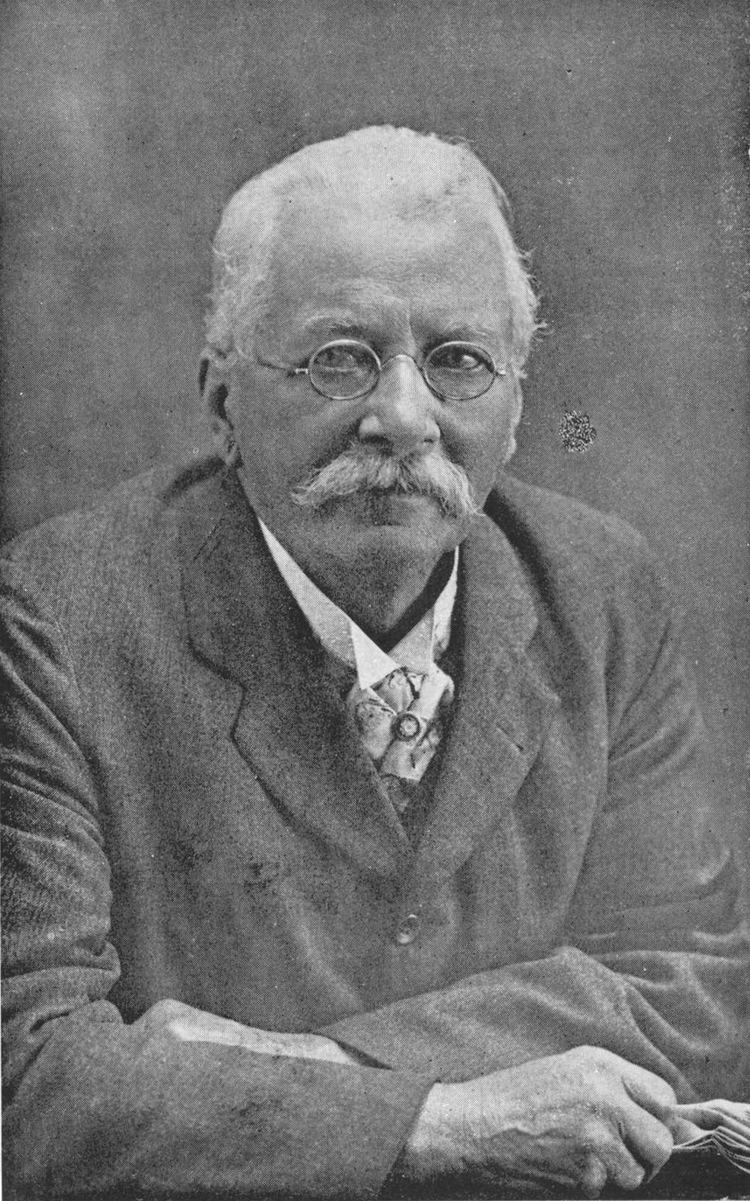Name Henry Suter | ||
 | ||
Born 9 March 1841Riesbach, Zurich, Switzerland ( 1841-03-09 ) Fields Zoology, Malacology, Paleontology | ||
Henry Suter (born Hans Heinrich Suter) (9 March 1841 – 31 July 1918) was a Swiss-born New Zealand zoologist, naturalist, palaeontologist, and malacologist.
Contents

Biography

Henry Suter was born on 9 March 1841 in Riesbach, Zurich, Switzerland, and was the son of a prosperous silk-manufacturer of Zurich. He was educated at the local school and university, being trained as an analytical chemist. Suter joined his father's business, and for some years he engaged in various commercial pursuits.
From his boyhood, Henry Suter was deeply interested in natural history. He enjoyed the friendship and help of such men as Dr. Auguste Forel, Professor Paul Godet, the brothers de Saussure (linguist Ferdinand de Saussure, sinolog and astronomer Léopold de Saussure and René de Saussure esperantist and scientist), Escher von der Linth, and especially the well-known conchologist, Dr. Albert Mousson.
Partly to improve his financial prospects and partly lured by the attraction of the fauna of a new country, Suter resolved to emigrate to New Zealand. It was the last day of the year 1886 when with his wife and a family of young children he landed in New Zealand. According to words by captain Frederick Wollaston Hutton: "He was Swiss, lately arrived in New Zealand with introductions from well-known European zoologists."
Suter began his colonial career by taking up a remote selection in the Forty-mile Bush in the Wairarapa district. It is only in a story that a middle-aged townsman can ever turn backwoodsman with success, and so after about a year, Suter relinquished the hard and hopeless struggle.
At this critical time captain Hutton, always a firm friend to zoologists, succeeded in obtaining for his protégé a post as assistant manager at the Mount Cook Hermitage. Subsequently work was available at the Canterbury Museum. After that, at one or another of the scientific institutions of New Zealand Suter spent the remainder of his life at congenial employment.
Henry Suter was an expert collector. He excelled in finding the most minute land snails, to find which requires knowledge, patience, and the sharpest eyes. Specialists in other groups were often supplied valuable material by Suter. In Switzerland he had formed a fine collection of European land and fresh-water shells, which was later acquired by the Australian Museum.
For several years, Suter restricted his studies to the terrestrial and freshwater molluscs of New Zealand. When his work on these approached completion, he proposed to extend his investigations to land gastropods abroad, hence his scattered papers on land molluscs from Brazil, South Africa, and Tasmania. His friends, however, persuaded him that science would be better served if he relinquished the foreign shells and transferred his attention to the marine molluscs of New Zealand. Not only did he take this course, but he finally embraced the Tertiary mollusks into his sphere of operations.
His characteristics were patience, perseverance, and concentration, rather than any great breadth of view.
After a brief illness, Henry Suter died at his home in Christchurch on 31 July 1918. He was buried at Linwood Cemetery on 3 August 1918.
Species described
Species originally discovered and described by Henry Suter include the following gastropods:
